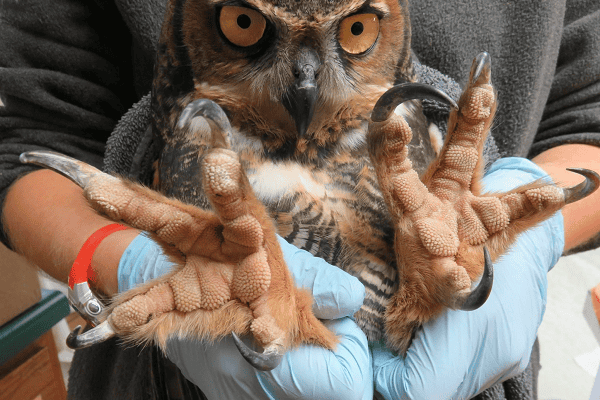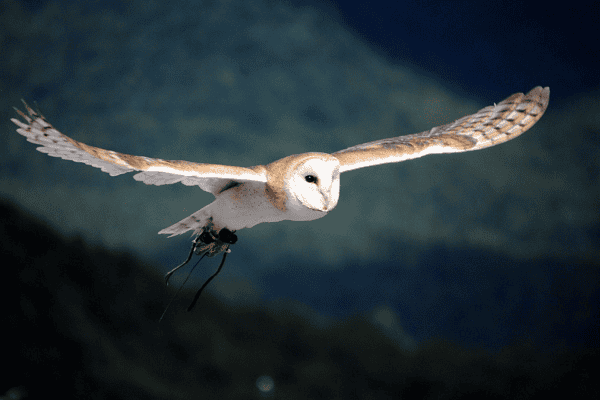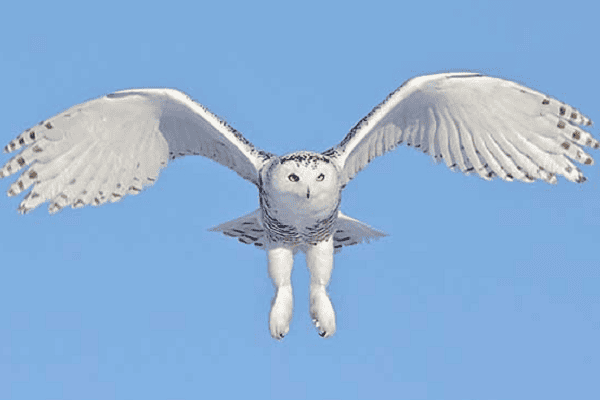What do you know about Owls Legs? If not then you’re on the right place. Owls are fascinating creatures that have captivated the human imagination for centuries. Their unique appearance, silent flight, and mysterious behavior have earned them a special place in folklore, mythology, and popular culture. One aspect of owls that often goes unnoticed, but is of significant importance, is their legs. Owls’ legs are marvels of adaptation, designed for efficiency, agility, and hunting prowess. In this article, we will delve into the world of owl legs, exploring the facts, types, sizes, and features that make them so intriguing.
1. Anatomy and Adaptation of Owl Legs
Owls belong to the order Strigiformes and are known for their specialized hunting techniques, primarily nocturnal hunting. Their legs play a crucial role in their ability to capture prey effectively. Owl legs have evolved to meet specific challenges in their natural habitats, such as low-light conditions and varying terrains. The primary adaptations of their legs include:
Silent Flight:
One of the most remarkable features of owls is their ability to fly silently. This stealth is aided by their unique leg anatomy. The leading edges of their primary flight feathers have serrations that break up the air turbulence, reducing noise during flight. This adaptation enables owls to approach their prey quietly, giving them a significant advantage in surprise attacks.

Powerful Grip:
Owls possess strong talons on their feet, which are crucial for catching and holding onto their prey. These sharp, curved talons are formidable weapons, capable of gripping tightly and preventing prey from escaping.
Rotatable and Asymmetrically Positioned Toes:
Owls have zygodactyl feet, with two toes facing forward and two facing backward. This arrangement, along with the ability to rotate their outer toes, provides them with exceptional dexterity. The flexible toes allow owls to grasp and handle objects of various shapes and sizes, such as prey, branches, and nesting materials, with ease.
Specialized Hunting and Perching:
Different owl species have adapted their legs for specific hunting techniques and perching habits. For instance, the burrowing owl (Athene cunicularia) has long legs that enable it to run swiftly across the ground and catch prey, while the great horned owl (Bubo virginianus) has robust legs that help it capture larger prey and perch firmly on tree branches.
Related Article: Cardinal Bird Facts
Owls exhibit a diverse range of leg types, each suited to their unique ecological niches. Some of the most notable owl leg types include:
Long-Legged Owls:

Long-legged owls, like the aforementioned burrowing owl, have elongated legs that aid them in ground-level hunting. They primarily prey on small mammals, insects, and reptiles and have evolved to be efficient hunters in open landscapes.
Short-Legged Owls:
In contrast, short-legged owls like the northern pygmy owl (Glaucidium gnoma) are well-suited for navigating dense forest environments. Their shorter legs enhance their maneuverability among branches and foliage, where they hunt small birds and insects.
Barn Owl:
The barn owl (Tyto alba) is a prime example of a specialized leg type. It possesses long, slender legs with powerful talons, enabling it to catch prey on the ground or in flight. This adaptability allows the barn owl to exploit a wide range of habitats.
Fishing Owls:
Fishing owls, like the African fishing owl (Scotopelia peli), have unique leg adaptations for hunting in aquatic environments. Their legs are equipped with rough scales and spicules, which aid in gripping slippery fish.
3. Size of Owl Legs
The size of owl legs can vary significantly between species. Generally, larger owl species have more robust and powerful legs to handle larger prey, while smaller species have more delicate legs suited to their prey and environment. The largest owl species, such as the Eurasian eagle-owl (Bubo bubo), may have legs that are over a foot in length, while the smallest owl species, like the elf owl (Micrathene Whitney), have legs only a few inches long.

Visit: Male Vs. Female Cardinal – What Are The Differences?
4. Features of Owl Legs
Owl legs have several unique features that contribute to their efficiency and hunting success:
Feathered Legs:
Unlike many other birds, owls have feathered legs that extend down to their talons. This adaptation aids in insulation during cold weather and may also serve to muffle the sound of their talons when walking or perching.
Camouflage and Cryptic Coloration:
Owls’ legs often feature cryptic coloration, blending with their plumage and surroundings. This helps conceal their legs when perched and provides them with an advantage while hunting or evading predators.
Strong Joints and Muscles:
Owls’ legs are equipped with robust joints and powerful muscles that allow them to exert considerable force when catching and holding onto prey. These adaptations are essential for their survival, as their diet primarily consists of live prey.
Courtship Displays:
In some owl species, the legs play a role in courtship displays. Male owls may use their legs to offer prey to potential mates as part of the courtship ritual.
Conclusion:
In conclusion, owls’ legs are marvels of adaptation, fine-tuned for silent flight, powerful gripping, and precise hunting. The diversity of leg types among owl species highlights the incredible versatility of these fascinating birds. As we continue to study and appreciate owls, their legs will undoubtedly remain a topic of interest and a testament to the wonders of evolution.
Understanding the unique characteristics and adaptations of owl legs provides us with valuable insights into the natural world and the incredible diversity of life that surrounds us. Owls’ legs are just one of the many remarkable features that make these birds extraordinary and deserving of our admiration and conservation efforts. As we strive to protect their habitats and ensure their survival, we can marvel at the intricate design and ingenuity of owls’ legs and the creatures they carry through the night skies.
Frequently Asked Questions
Q1. What type of legs do owls have?
Owls have zygodactyl legs, with two toes facing forward and two facing backward, allowing them to grip and manipulate objects with exceptional dexterity.
Q2. What is a unique fact about an owl?
A unique fact about owls is their ability to fly silently, thanks to special serrations on the leading edges of their primary flight feathers.
Q3. What do owls use their feet for?
Owls use their feet primarily for hunting and catching prey. Their powerful talons help them grip and immobilize their victims.
Q4. Do owls have a heart?
Yes, like all birds, owls have a heart. Their circulatory system is essential for supplying oxygen and nutrients throughout their bodies.
Q5. Why are owls so smart?
Owls are considered intelligent due to their exceptional problem-solving abilities, keen senses, and adaptive behavior. Their large, well-developed brains contribute to their intelligence.
Q5. What are owls’ feet called?
Owls’ feet are called talons, which are sharp, curved claws used for hunting and catching prey.
Q6. How strong are owl feet?
Owl feet are incredibly strong. They have a powerful grip that allows them to hold onto prey securely, often with more than ten times their body weight.
